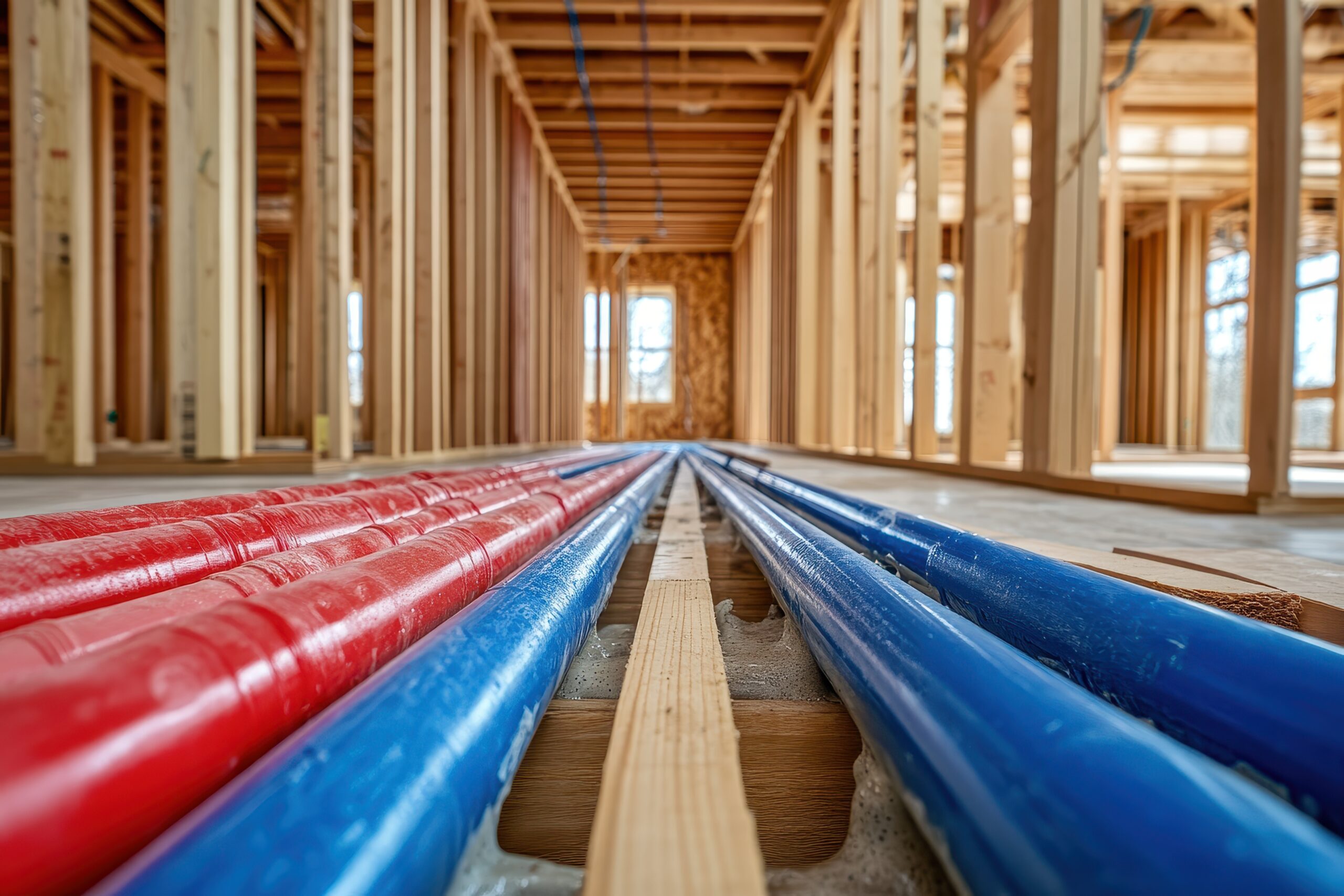When it comes to home plumbing, the debate of PEX piping vs copper is more relevant than ever. Homeowners want reliable, long-lasting solutions, but also need to consider cost, installation, and maintenance. Beis Plumbing, serving the St. Louis area, breaks down the pros and cons of PEX piping vs copper so you can make an informed decision for your next plumbing project.
What Is PEX Piping?
PEX (cross-linked polyethylene) piping is a flexible, plastic tubing that has become increasingly popular in residential plumbing. According to the International Association of Certified Home Inspectors, PEX is now used in more than 60% of new residential water supply systems in the U.S.
Advantages
- Flexibility and Installation – PEX tubing can bend around corners and obstacles without requiring joints or fittings, making it ideal for retrofitting existing homes. This flexibility allows for continuous runs from the water heater to fixtures, reducing potential leak points.
- Cost-Effectiveness – PEX typically costs 25-50% less than copper for both materials and installation. The reduced labor time due to easier installation further amplifies these savings.
- Corrosion Resistance – Unlike metal pipes, PEX won’t corrode, pit, or develop mineral buildup over time. It’s also resistant to acidic water conditions that can damage copper pipes.
- Freeze Tolerance – PEX can expand slightly when water freezes inside it, making it less likely to burst compared to rigid copper pipes in cold climates.
- Quiet Operation – PEX reduces water hammer and noise transmission compared to copper, creating a quieter plumbing system.
Disadvantages
- UV Sensitivity – Direct sunlight exposure will degrade PEX over time, making it unsuitable for outdoor applications without proper protection or covering.
- Code Restrictions – Some local building codes haven’t fully adopted PEX standards, particularly for certain applications like gas lines or in commercial buildings.
- Rodent Vulnerability – Rats and mice can chew through PEX tubing, which isn’t a concern with copper pipes.
- Temperature Limitations – While PEX handles normal hot water temperatures well, it has lower maximum temperature ratings than copper.
- Expansion and Contraction – PEX expands and contracts more than copper with temperature changes, requiring proper support and allowances.
What Is Copper Piping?
Copper piping has been the standard for decades. It’s known for its durability and resistance to bacteria. According to Home Depot, copper pipes can last 50 years or more with proper maintenance.
Advantages
- Longevity and Durability – Copper pipes can last 50-70 years or more when properly installed and maintained, significantly outlasting PEX systems.
- Heat Tolerance – Copper can handle much higher temperatures than PEX, making it suitable for all plumbing applications including recirculation systems and solar heating.
- Antimicrobial Properties – Copper naturally inhibits bacterial growth, providing an additional layer of water quality protection.
- Universal Acceptance – Copper is accepted by all building codes and has a long track record of reliable performance.
- Recycling Value – Copper retains significant scrap value and is highly recyclable, making it environmentally sustainable.
- Proven Track Record – Decades of use have demonstrated copper’s reliability and predictable performance characteristics.
Disadvantages
- Higher Costs – Copper materials cost significantly more than PEX, and installation requires skilled labor, increasing overall project expenses.
- Corrosion Susceptibility – In areas with acidic or highly mineralized water, copper can develop pinhole leaks or green corrosion over time.
- Installation Complexity – Copper requires soldering or compression fittings, making installation more time-consuming and requiring specialized skills.
- Thermal Conductivity – Copper conducts heat readily, potentially leading to energy loss in hot water lines without proper insulation.
- Rigid Installation – The inflexibility of copper requires more fittings and joints, creating additional potential failure points and making retrofitting more challenging.
- Theft Risk – Copper’s value makes it a target for theft in unoccupied buildings or during construction.
PEX Piping vs Copper: Cost Comparison
One of the biggest differences in the PEX piping vs copper debate is cost. PEX is generally much less expensive to purchase and install. According to Forbes, PEX installation can cost 25-40% less than copper.
- PEX: $0.50 to $2 per linear foot (including installation)
- Copper: $2 to $4 per linear foot (including installation)
However, copper’s longevity may offset the initial investment for some homeowners.
Which Is Right for Your Home?
The choice between PEX piping vs copper depends on your budget, local building codes, and specific plumbing needs. For more information on plumbing materials and installation, visit Beis Plumbing’s Plumbing Services page.
Contact Beis Plumbing for Expert Advice
If you’re planning a plumbing upgrade or repair, contact Beis Plumbing for a professional assessment and personalized recommendations.

